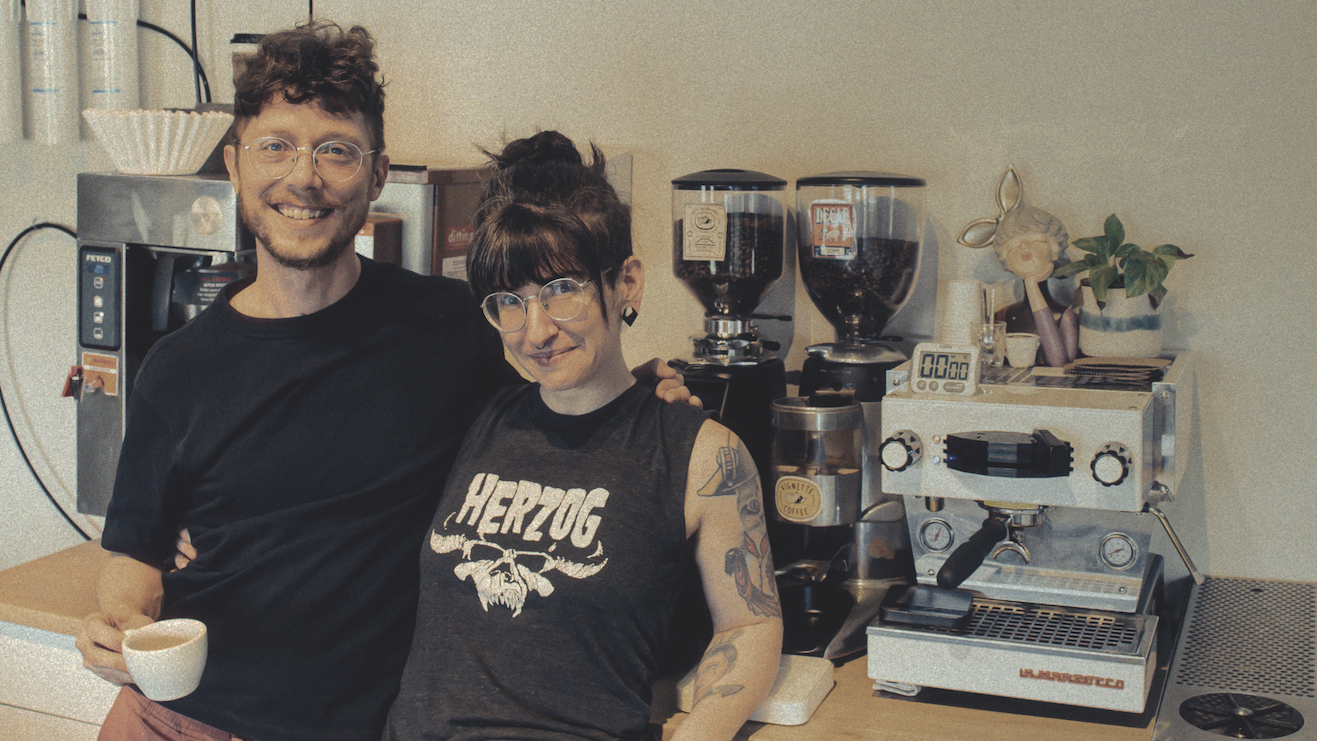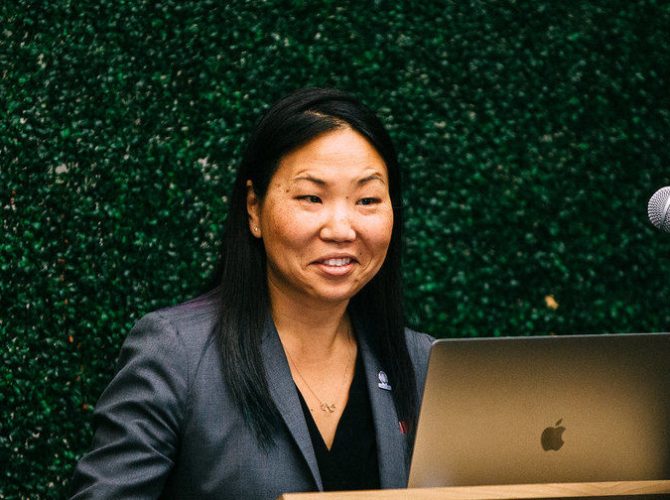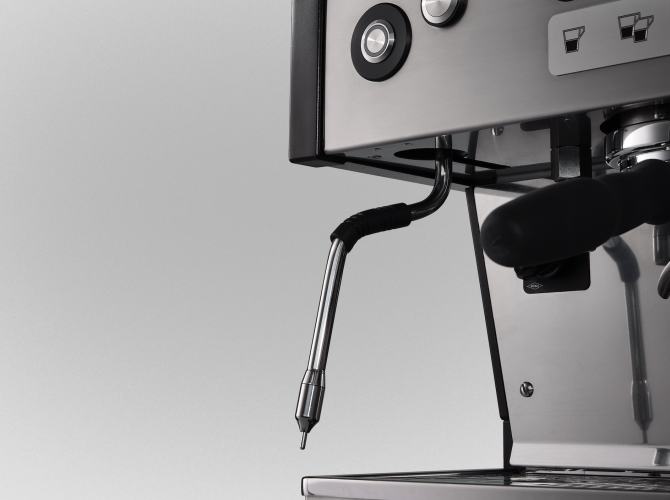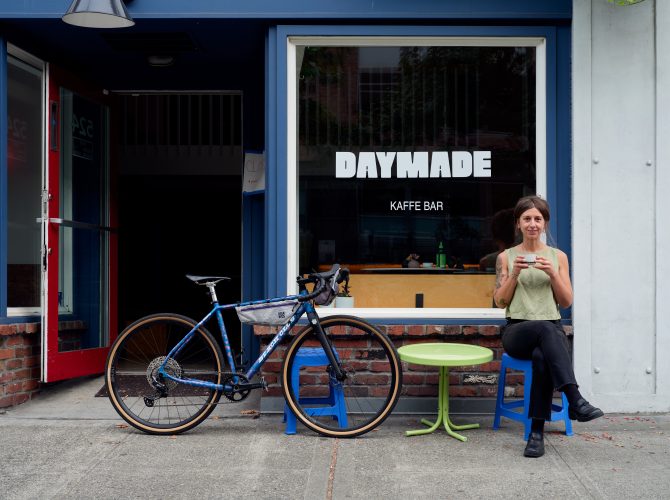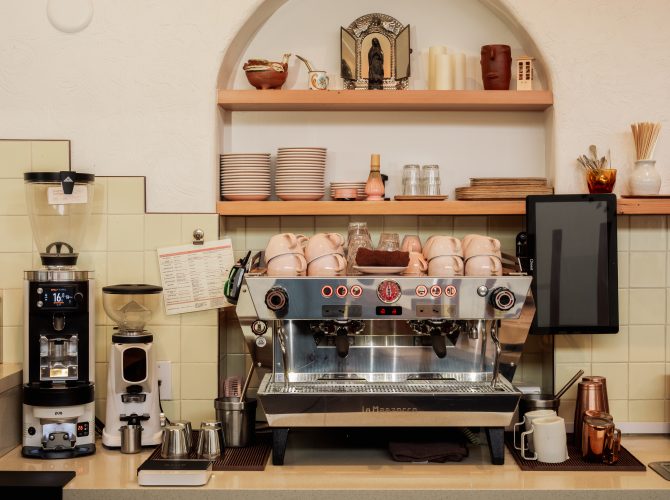Opening Notes is a new content series from La Marzocco focusing on the information everyone should know before they open their first café. Over the next few months, this series will examine topics that cover business practices, marketing ideas, and café operations, each featuring a coffee expert in that field.
Mandy Spirito and Michael Harwood are the owners of Vignette Coffee Roasters in Greensboro, North Carolina. While Michael is a Q Grader with a background in sourcing and quality control for roasters like Little Waves and Ceremony Coffee, Mandy has a long history as a coffee roaster, starting with Wrecking Ball in San Francisco and most recently with Little Waves when they won Roaster of the Year in 2022 from Roast Magazine. As a two-person operation, Michael and Mandy do a bit of everything—cupping, sourcing, roasting, and yes, even running a small coffee bar out of their roastery three days a week. We spoke with them about what it’s like to run a small café business out of your roastery, and how espresso plays a part in a coffee roasting company.
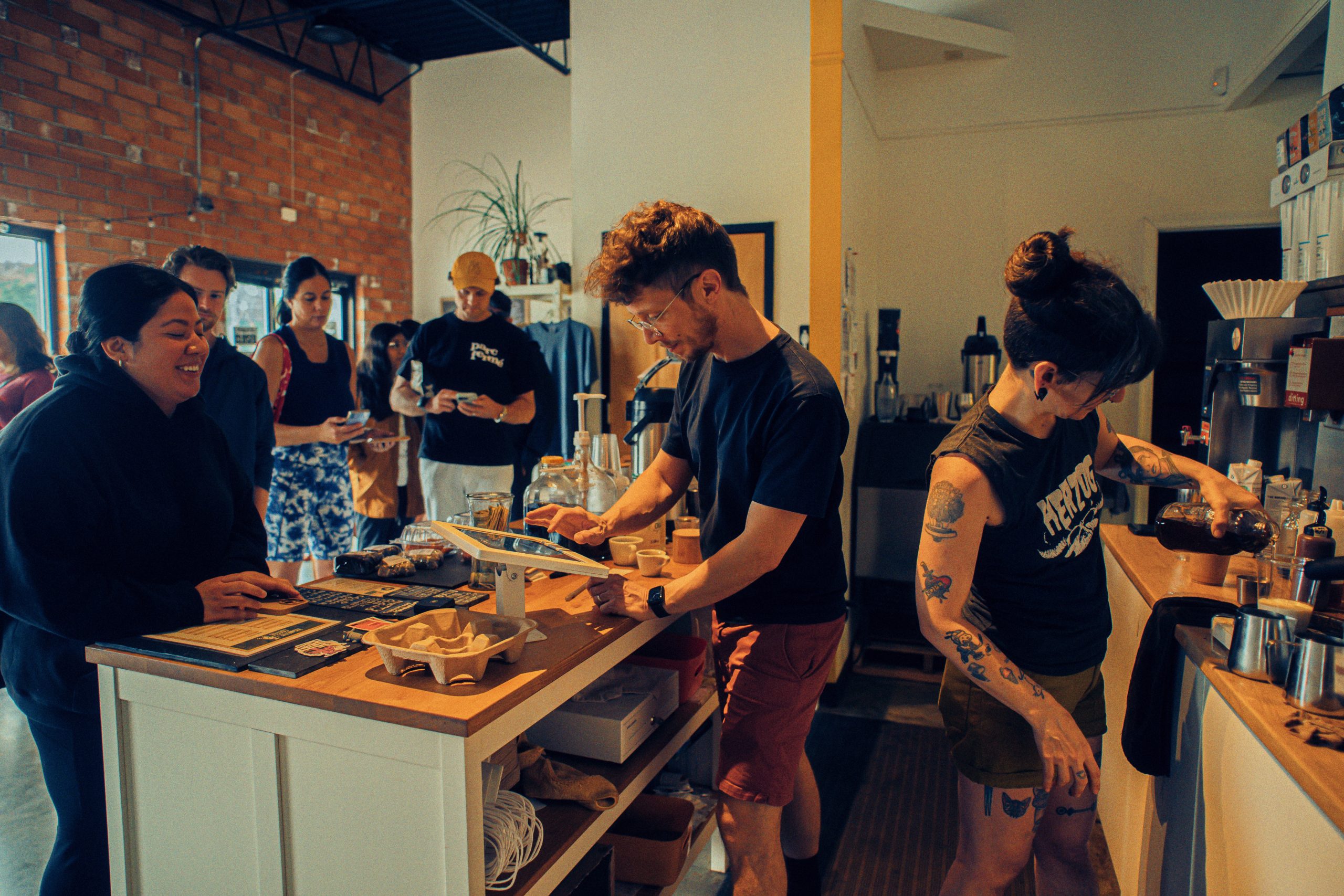
When you were starting Vignette, what role did you think espresso would have in your roasting business?
As a wholesale roaster, we saw it in a supporting role, at least initially. But in the end we’re both nerds that love espresso service, so we decided to do a small cafe three days a week. It’s ended up being incredibly essential, and a fun addition to roasting QC—you really get an idea of how the roasting’s going when you’re cranking out shot after shot in fast-paced service.
How many different espresso blends do you offer?
We don’t market any of our four core blends specifically as espresso. Instead, we use the tasting room as an opportunity for connection (supplemented by an online coffee match assessment), which helps point people in the direction of their preferred roast level/character. Our blends (Rose Glass, Golden Key, Nightshade, and a rotating Seasonal) are all labeled with roast level and tasting notes. We wanted to make the perennials approachable and easy to grab. We’ve noticed that as our guests find their favorite roast level, they often branch out to single origins in their preferred range, though the core four remain our best sellers annually. A couple of our favorite espressos recently have been from the Comon Yaj Noptic Cooperative in Chiapas, Mexico, and from Anna Maria + Estela Durán’s San Carlos Estate in Antigua, Guatemala, both super sweet medium roasts.
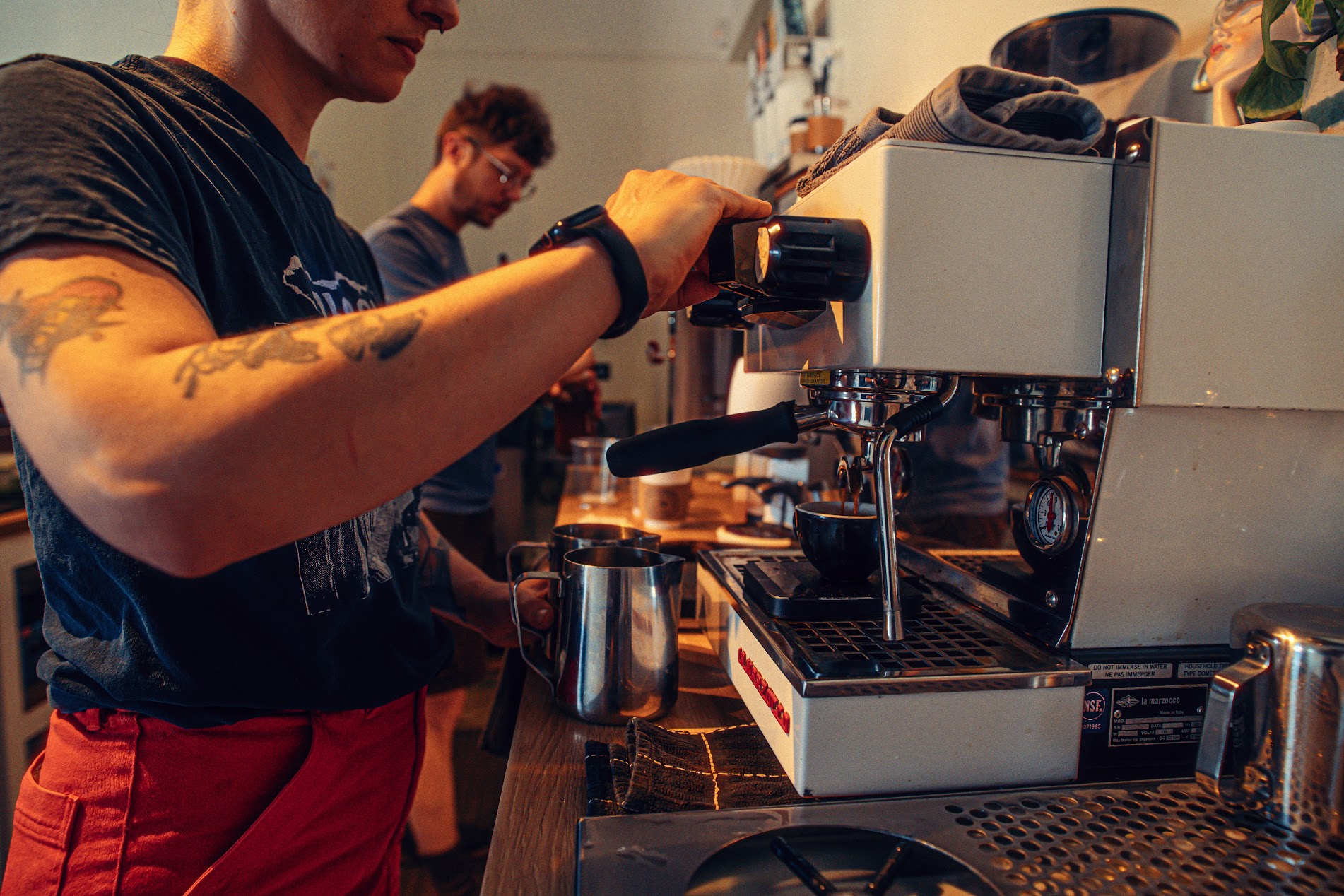
When conceptualizing the Tasting Room, what made you choose a Linea Mini?
Buying a La Marzocco machine wasn’t a question for us—they’re great machines, a pleasure to work on, and absolute workhorses. We chose a Linea Mini because our front-of-house is pretty small and the bar area even more constrained. We didn’t think our roasting location would get busy enough to warrant a two-group; we’re only open for 17 hours a week. It’s grown steadily busier through word of mouth to the point now where we almost don’t stop brewing espresso and steaming milk from open to close – all without a hitch from the Linea Mini. It’s a little bit of a dance between shot brewing and steaming to keep the steam boiler at optimal pressure, but that rhythm is natural and easy to keep. We’re very impressed at how many drinks you can crank out on such a compact machine! Ours is plumbed in, which makes a busy workflow more manageable.
Do you use your Linea Mini for espresso training?
We host two classes each week, with most subjects featuring the Linea Mini. We find the Linea Mini to be an ideal machine for espresso training with its intuitive brew activation paddle, focused interface, and smooth milk steaming, among other qualities.
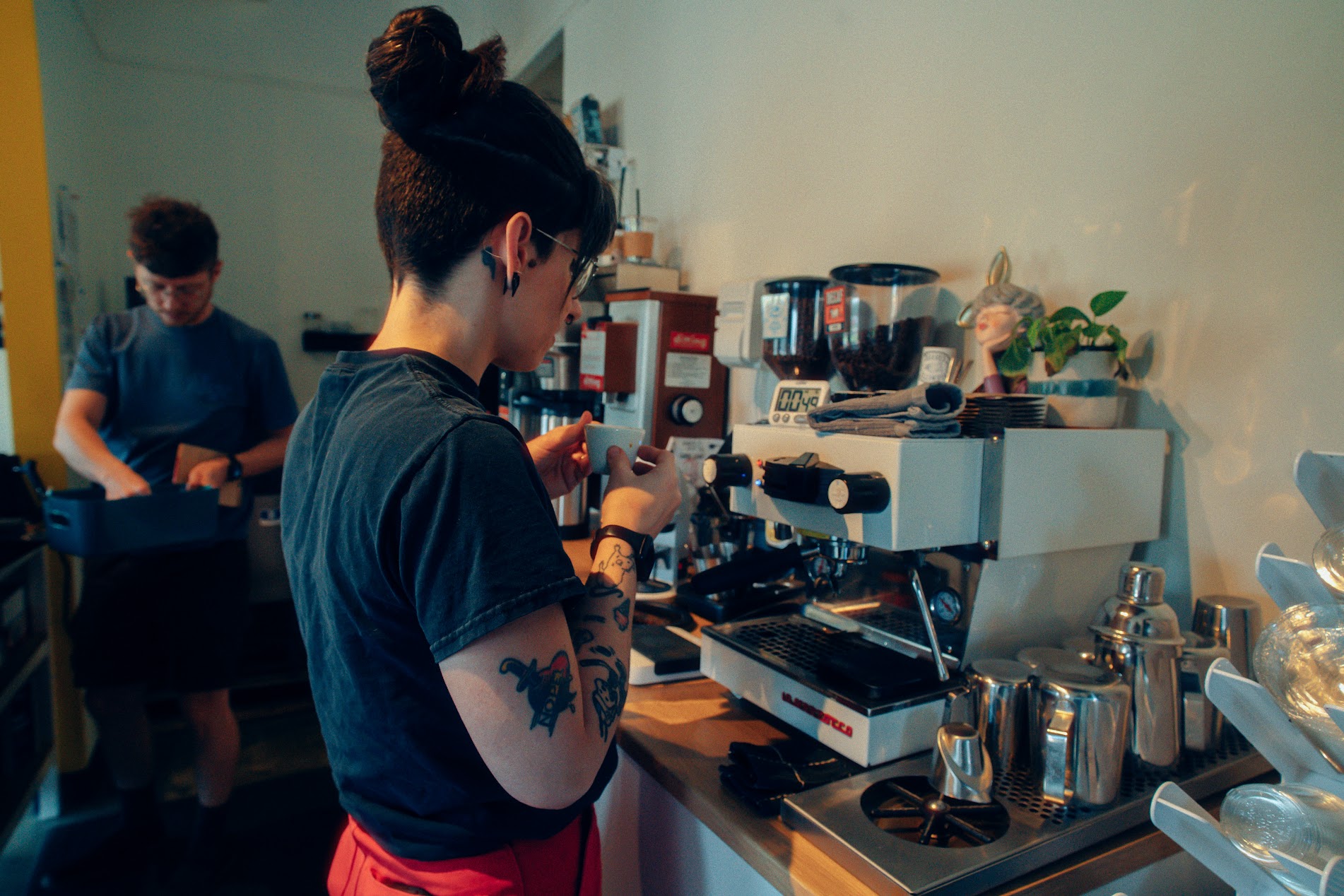
How does having an espresso machine so close to your roaster impact your quality control work?
Brewing multiple coffees on espresso each week is a vital part of QC for us. Although we do use cupping to help us evaluate espresso QC, nothing beats the real thing.
What are some things to consider when planning a small coffee bar?
Assess your budget and note existing access to electric and plumbing—they’re likely in short supply, but make sure they meet the requirements of all of the equipment you’ll put on the bar. We don’t have much of either, so figuring out how to maximize a tiny bar space on a constrained budget took some planning. We came to the conclusion that practicing good bar flow on a compact 120V espresso would be our best bet.
I’d add that one of the best things we did was ask for help from our local government. We were able to understand zoning complexities that allowed us to rent a multi-purpose building for roasting and tasting room by connecting to local officials.
What are some things you’d do differently for the Tasting Room knowing what you know now?
Go the extra mile, pay an electrician to run a 220V circuit, and buy a two-group La Marzocco. Easy to say now that we enjoy support from the community, but scary to take that leap initially. The bar space would still be an issue, but we’ll likely be figuring that out soon!

How does the Tasting Room help you connect with new whole bean customers?
The tasting room has given us a platform to speak through our work. We are not keen self-promoters as we’re both shy and mostly like to keep our heads down and do the work. Our Instagram is pretty bare-bones because of this (probably just should’ve said it’s “insta-ennui aesthetic”), but the Tasting Room’s word of mouth has been nothing short of incredible. Most of our wholesale partnerships developed from a visit and an espresso drink or two.
Do you think you’d have the same profile in your local community without the Tasting Room?
Likely not. We’re both shy guys and are not keen on self-promotion. We believe that in coffee, it’s generally better to show than tell, and the tasting room has made this possible. We want to do business in a different way. We aren’t about growth so much as we’re about being a thriving business that helps its partners grow, takes care of its employees, and helps them grow in their own careers. We keep our margins slimmer in the roastery and the cafe for our community, because everyone should be able to enjoy great specialty coffees. It’s an increasingly difficult world out there, where we’re all advertised to as dollar signs, and we’re determined to create the opposite of that experience. I think people resonate with that, and I think it’s part of why folks wait 30+ minutes in a line that stretches out the door for the 17 hours it’s open.
How important has your local community been for the success of Vignette?
Immensely important. We’re horrible at social media (“insta-ennui aesthetic?), and word of mouth has been everything for us. Greensboro has really shown up in that way, and we’re forever grateful. Most of what we do shouldn’t work on paper, but with the support of Greensboro, it’s been working pretty well.
To learn more about Vignette Coffee Roasters, visit their website. You can also follow them on Instagram.
